
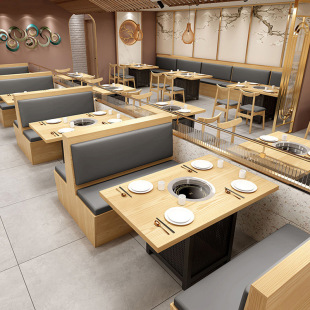
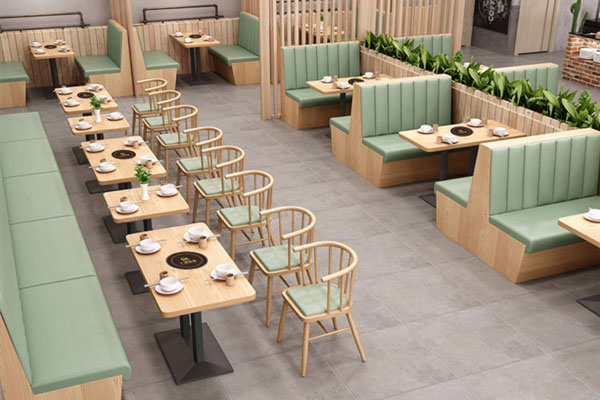
Boss Li, who just opened a Korean army hotpot restaurant, has been stressed lately: he followed the trend and chose popular solid wood tables, but student customers kept spilling tteokbokki soup on the surfaces—within two months, the wood grain was full of oil stains. Meanwhile, Boss Wang, who runs a high-end seafood hotpot restaurant in a business district, lost many repeat customers because he used shared tables; patrons complained, “Reaching for food feels unrefined.” In fact, choosing hotpot tables doesn’t have to be a guess. As a furniture manufacturer with 12 years of experience, we’re sharing the core “no-waste” rule today—first check your business scenario, then pick the table configuration—plus answers to 3 top questions from restaurant owners!
1. Don’t Just Pick Tabletops for Looks! 6 Materials Test Report
Many owners only focus on “how pretty” a tabletop is, ignoring “whether it can handle the chaos of a hotpot restaurant.” We spent 3 months testing heat resistance, oil resistance, and durability, and compiled this matching table to help you choose based on your scenario:
| Tabletop Type | Suitable Business Scenarios | Test Highlights (Real Data) | Pitfall Warnings | Cost Ranking (High→Low) |
| Natural Marble | High-end seafood hotpot, private dining | 100℃ pot base placed directly, no scorch marks; texture doesn’t fade after 6 years | Customization needed for widths over 90cm (15-day lead time) | 1 |
| Artificial Quartz | Luxury hotpot in business districts | Spilled beef tallow hotpot wiped clean in 3 seconds with a damp cloth | Low-cost options (<¥200/㎡) stain easily; choose ≥¥300/㎡ | 2 |
| Artificial Stone | Community home-style hotpot | No discoloration after 24-hour soak in soy sauce/vinegar | Avoid steel wool when wiping with hot water in winter (causes scratches) | 3 |
| Tempered Glass | Internet-famous check-in spots, milk tea hotpot | Spilled milk tea wiped clean in 5 seconds; colored options look bright in photos | Pair with wooden table legs (glass alone is easy to break if dropped) | 4 |
| Solid Wood | Traditional copper pot hotpot | No rough edges; spilled dipping sauce wipes clean with a tissue | Choose “solid wood core + edge-sealed” models—pure veneer warps in 3 months | 5 |
| Veneered MDF (Fireproof Board) | New takeout-focused hotpot shops | Lowest cost; installed in 1 hour | Prevent soup from seeping into table gaps (causes mold) | 6 |
Owner Q&A 1: “I’m starting a takeout-focused hotpot shop with a budget of only ¥8,000. What tabletop can I choose?”
A: Go for the “veneered MDF + tempered glass” combo! Use 6mm-thick tempered glass for the tabletop (stain-resistant and sleek) and veneered MDF for the legs. This costs 40% less than pure tempered glass tables, and you can print your shop logo on the glass—customers notice it immediately when picking up takeout, boosting brand recall.
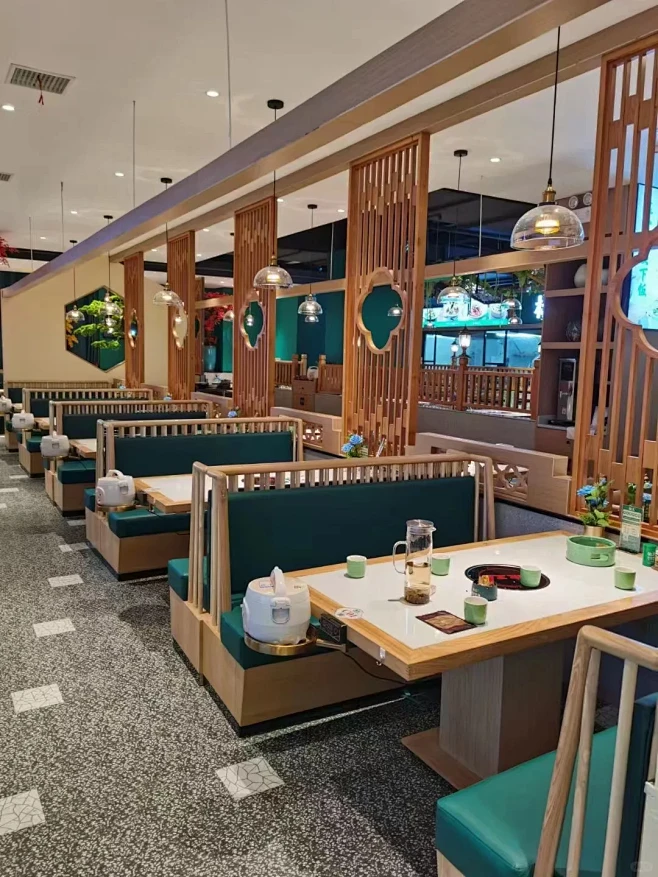
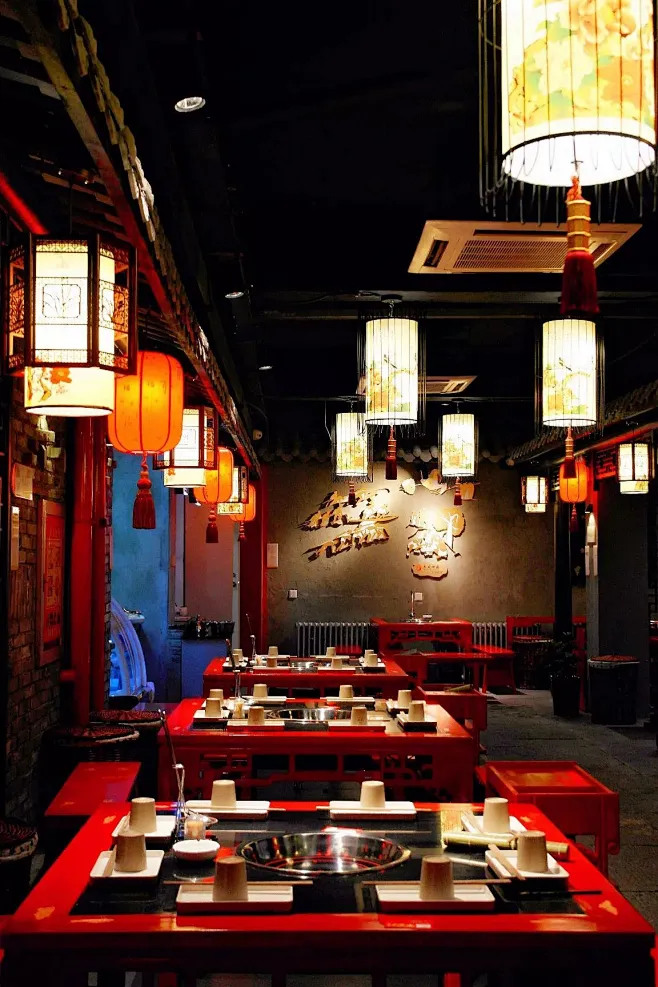
2. Wrong Dining Style Wastes Even Expensive Tables! 3 Scenario Test Results
Before choosing a dining style, ask: “Who are my customers?” We summarized precise matching plans based on feedback from 50+ hotpot restaurants with different positioning:
Individual Hotpot Tables (One Pot per Person): Perfect for high-end seafood or single-serve hotpot shops! We helped Boss Wang in the business district switch to individual tables—customers said, “No more fighting for scallops; dining feels elegant.” Average spend rose from ¥180 to ¥220, and repeat rates increased by 30%. Note: Choose 18cm-diameter pots—too big wastes space, too small can’t fit whole shrimp.
Shared Hotpot Tables (1-3 Pots for Groups): A must for traditional Sichuan-Chongqing or Northeast Chinese sauerkraut hotpot shops! Boss Zhang, who runs a Northeast hotpot shop near a university, switched to shared tables. Students said, “Eating sauerkraut with pork around a shared pot feels like home,” and weekend groups of 4-6 people became common—table turnover doubled. Add a “heat-resistant ring” in the table center to prevent customers from burning their arms on hot pots.
Self-Service Hotpot Tables (With Rotating Racks): A money-maker for affordable hotpot shops near universities or food courts! Last year, we installed rotating self-service tables for a Korean army hotpot shop. The rack was filled with cheese tteokbokki and spam—students didn’t need to stand up to grab food. Weekend turnover rose from 3 to 5 times, and they hired 1 fewer waiter, saving over ¥3,000 monthly.
Owner Q&A 2: “I want an internet-famous check-in shop. Should I choose individual or self-service tables?”
A: Go for the “individual + half-rotating rack” combo! Each seat has a small pot, and a half-circle rotating rack on the table’s outer edge holds photo-worthy items like fruit or desserts. Customers can take photos of “elegant single-serve pots” and “rotating dessert racks.” One client did this and got over 200 Xiaohongshu (Chinese Instagram) check-in posts.
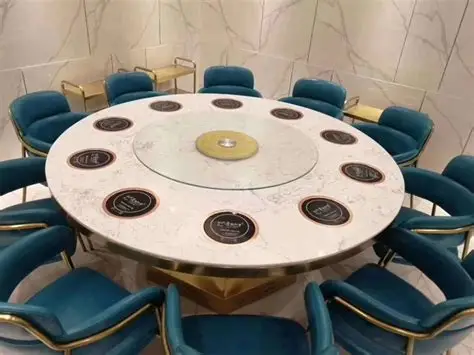
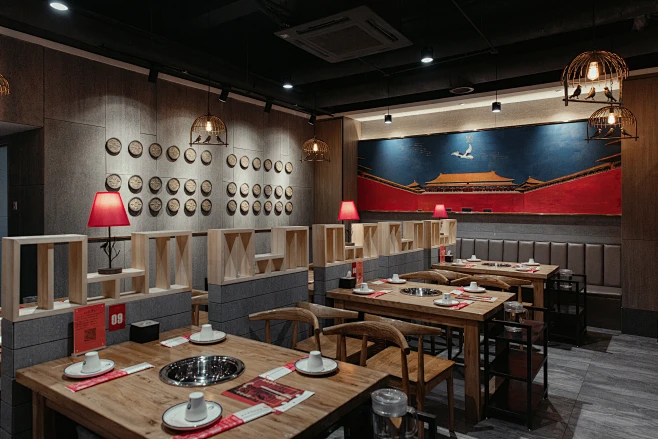
3. Don’t Ignore Heating Equipment! 3 Hidden Advantages of Induction Cooker Tables
Many owners only realize the problems with traditional open-flame tables after accidents—last summer, a hotpot shop’s gas canister leaked on a hot day, nearly causing a fire. Our induction cooker tables are optimized for hotpot scenarios, with 3 surprising test results:
Good Heat Dissipation: On 40℃ days, the induction cooker runs continuously for 8 hours, and the surface temperature stays at only 38℃—safe for waiters to wipe;
Energy-Saving: A 10-table shop saves over ¥2,500 monthly with induction cookers vs. gas. You can set “scheduled heating” after closing—no preheating wait when opening the next morning;
Space-Saving: Embedded models hide the induction cooker completely under the table, leaving only a small pot slot. This saves 15% more table space than gas tables, fitting more dipping sauce dishes.
Choose installation based on your scenario: Settling-type for takeout-focused shops (lower the heating plate after closing to flatten the table for takeout boxes); hidden-type for internet-famous shops (only a silver button shows—no equipment in photos, looking more premium); embedded-type for community shops (no gaps to trap oil during cleaning).
Owner Q&A 3: “Will induction cooker power drop over time?”
A: Our induction cookers use “copper coils,” 3 times more durable than regular aluminum coils. One client used theirs for 5 years, and the power is still like new. We also offer “free on-site inspections”—we test the power yearly, and repair issues within 24 hours, so business isn’t disrupted.
The core rule for choosing hotpot tables is simple: Don’t follow trends for expensive options—choose what “fits your customers and scenario”. As a furniture manufacturer, we also customize tables based on your shop’s size, foot traffic, and budget. For example, if your shop is in a food court, we can make “foldable self-service tables“—expand them during peak hours, fold them to save space during slow times. If you’re unsure, send us photos of your shop anytime—we’ll create a free plan for you!

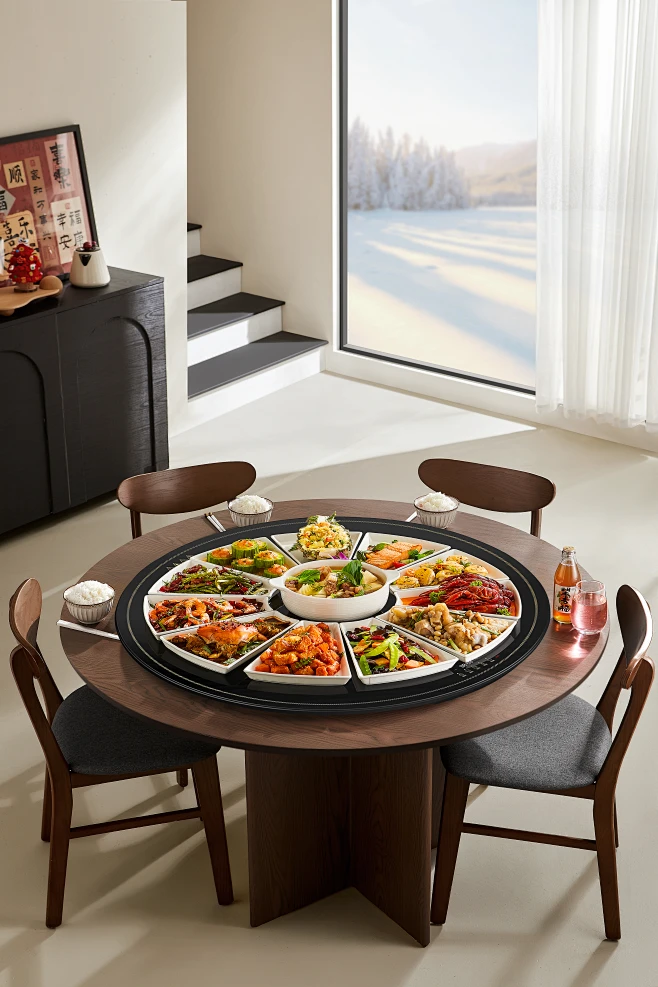
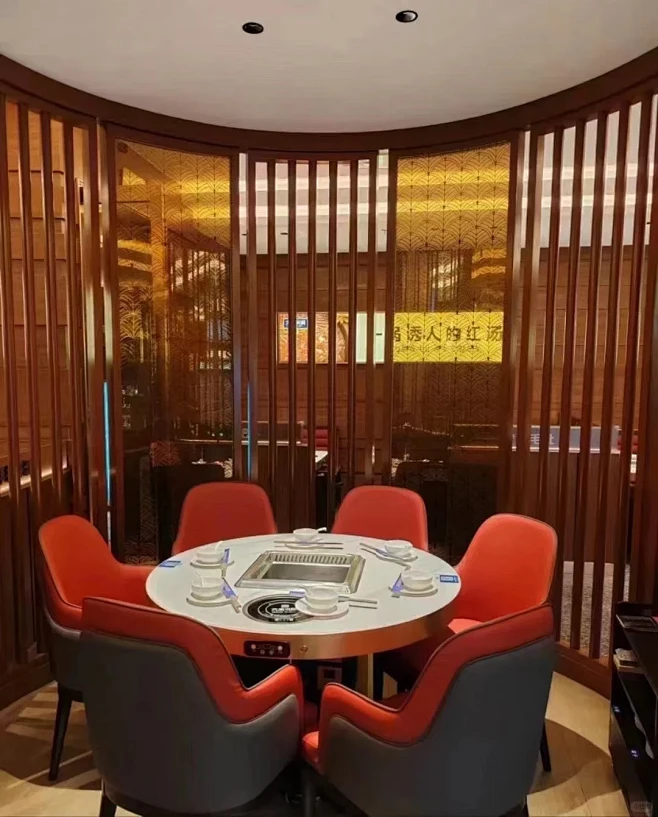
Previous article:4 Core Principles for Café Furniture Selection
Next article:None
I have a load-bearing wall in my restaurant, and ready- […]
In the bustling yet nature-loving Pearl River Delta, cu […]
It was a typical Tuesday morning when I received a call […]
When you walk into an upscale restaurant and see beauti […]